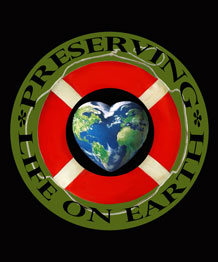Wetlands

FYA: For Your Awareness
Wetlands cover approximately 6% of the world’s surface and are located on every continent except Antarctica.
Wetlands form a buffer between land and water, purifying water, providing flood control, and serving as a habitat for animals, plants, and birds. It is estimated that 300 – 400 million people live close to and depend on wetlands for their survival. Since 1900, more than half of the world’s wetlands have disappeared.
What is a wetland?
Wetlands are areas that are covered by water either seasonally or permanently, such as ponds, marshes, bogs, swamps, streams, edges of lakes and outlying areas that are subject to regular flooding. They can contain freshwater, salt water or a combination of the two. They are associated with land and form a buffer between water and land by acting as reservoirs for excess water. Wetlands are home to animals, plants, amphibians, birds, insects and fish. They contain the largest number of animal species of any of the ecosystems. A swamp is a wetland that contains trees, an example of which is the Florida Everglades.
Wetlands contain a variety of plant species that serve as both a food source and cover for the species that live there.They include plants rooted in soil such as cattails and rushes; submerged plants spending their life below the water surface; floating leaved plants such as water lilies; scrub shrubs that are rooted and can grow up to 20 feet tall like alder and buttonbush; and willow and sycamore trees.
There are lots of insects found in wetlands including flies, beetles, mosquitoes, and dragonflies, to name only a few. Fish also are found in wetlands and can include trout, salmon, flounder, crab, and shrimp.
Bird species are the largest inhabitants of wetlands and can include ducks, geese, shorebirds, herons, kingfishers, birds of prey, rails, pelicans, grebes and shearwaters. There are also frogs, turtles, salamander, and snakes. Some mammals hunt in wetlands while others such as muskrat, beaver, otter, sea otter, and alligator inhabit wetlands.
Where are Wetlands located?
There are wetlands everywhere there is water and they exist on every continent except Antarctica. Some of the largest wetlands include the Pantanal, in South America, the Canadian Arctic bays, and the peat bogs of Western Siberia.
Why are Wetlands important to protect?
Wetlands play a vital role in the environment safeguarding our water supply by acting as a filter to cleanse and purify water, providing flood control to hold water before releasing it into rivers and other bodies of water, and maintaining shoreline stability. Many people think of wetlands as stagnant water that are full of disease and therefore seek to destroy or pave over them. In addition to the role they play in preserving our environment, they also serve as habitats for plants, animals, birds and fish, and provide recreational opportunities. Eliminating wetlands endangers these species, erodes biodiversity, and imperils our environment.
When are Wetlands under threat?
People are the biggest threat to wetlands. By changing wetlands either by cutting off their connection to water supplies or eliminating them for housing developments or turning them into agriculture, it sets off a chain reaction. By altering wetlands, they lose their ability to filter water or maintain the pH balance of the water or soil, with the potential for it to be unable to support life. Non-native plants can choke out beneficial plants resulting in an ecosystem that doesn’t support life for native species. Without wetlands rivers can experience more flooding and developments built in the flood plains can experience flooding without the wetlands to serve as a buffer. Whole species of birds, animals and plants that lived in the wetlands may cease to exist.
Who is protecting and preserving Wetlands?
World Wildlife Federation (WWF) Global Freshwater Program is designed to preserve freshwater wetlands for water stewardship and security for those dependent on these water supplies. Wetlands International helps to identify the most important wetlands for conservation by partnering with local agencies to conserve their wetlands. They prioritize wetlands based on their high carbon stock , serving as stopover for migratory water birds, or ability to hold and release water after flooding into the water supply.
How can we preserve and protect Wetlands?
While wetlands may not garner as much worldwide attention as being important to preserve, they are very important to our well being. You can help to protect wetlands by advocating for protecting and restoring wetlands in your community. Wetlands need to be protected from land development. By advocating for stricter land development rules where wetlands must be protected, restored and maintained as part of the condition for development, wetlands will continue to exist. And as an individual, you can donate time and money to organizations that protect wetlands.

